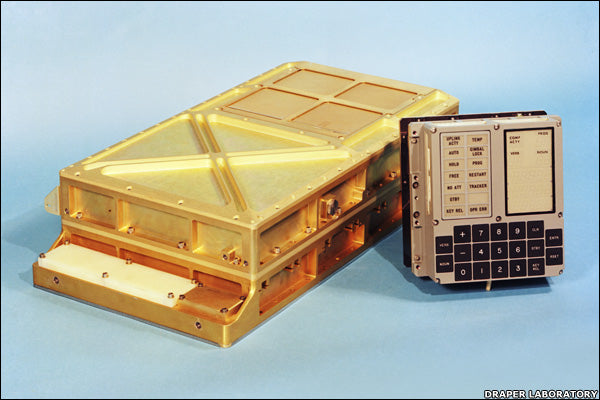Memory Metamorphosis: AGC to ProtoCycler Chips
In the world of computer memory, the Apollo Guidance Computer (AGC) and modern memory chips stand as historical bookends, showcasing how far technology has come. The AGC, a marvel of its time, utilized core rope memory to navigate the Apollo missions to the moon. Today, we rely on sleek and versatile memory chips for a multitude of tasks, including the operation of ProtoCycler.
The AGC marked a significant milestone in computing history, serving as the brains behind the Apollo missions that landed astronauts on the moon. What set the AGC apart was its use of core rope memory, a technology that uniquely stored software and data. Core rope memory employed magnetic cores and wires to weave intricate patterns, encoding instructions that guided spacecraft operations. These cores and wires intersected at certain points, creating a grid-like structure.

When data was stored, an electric current was sent through a specific wire, generating a magnetic field around the core it passed through. This field could be oriented to represent either a 0 or a 1, essentially encoding binary data. To read the data, another wire passed through the core and detected the magnetic field's orientation. The absence or presence of a magnetic field indicated the stored binary value.
It's important to note that core rope memory was "read-only," meaning that once the magnetic pattern was set, it couldn't be changed. This limitation is what gave the memory its reliability – the data remained intact even in the face of power loss or external interference.

Modern chips, like the one in the heart of ProtoCycler, have benefitted from the advances in small form factors, while maintaining computational power. The ProtoCycler chip has 32 kB of ROM and 2500 bytes of RAM, in comparison to AGC’s 72 kB of ROM and 4000 bytes of RAM. ProtoCycler also runs at 16 mHz, while AGC’s was only 2 mHz. While these specifications make an intriguing comparison, the real surprise lies in the fact that the chip in the ProtoCycler is a mere postage stamp in size, where the AGC took up a whopping cubic foot, and weighed 70 lbs.
Now, in today's world of 8 core CPUs and blazing fast GPUs, the spec's above might not seem like a lot - but when used properly, they're enough to either land a man on the moon, or create incredibly consistent filament - automatically and intelligently - right on your desk. We'll leave it up to you to decide which feat is more inspiring!

Comparing the AGC and modern memory chips offers a glimpse into the dynamic evolution of technology. The AGC's core rope memory and ProtoCycler's advanced chip underscore the substantial progress made in memory capabilities, from the moon missions to complex filament extrusion. This evolution stands as a testament to our ability to push the boundaries of innovation and redefine the possibilities of computing.
Image References:
[1] A. Brown, in The Dibner Institute for the History of Science and Technology, https://authors.library.caltech.edu/5456/1/hrst.mit.edu/hrs/apollo/public/visual3.htm, Accessed: Aug 15, 2023
(Photograph © Raytheon, from the files of Jack Poundstone.)
[2] J. Fildes, in BBC NEWS "Weaving the way to the Moon", http://news.bbc.co.uk/2/hi/8148730.stm, Accessed: Aug. 9, 2023


